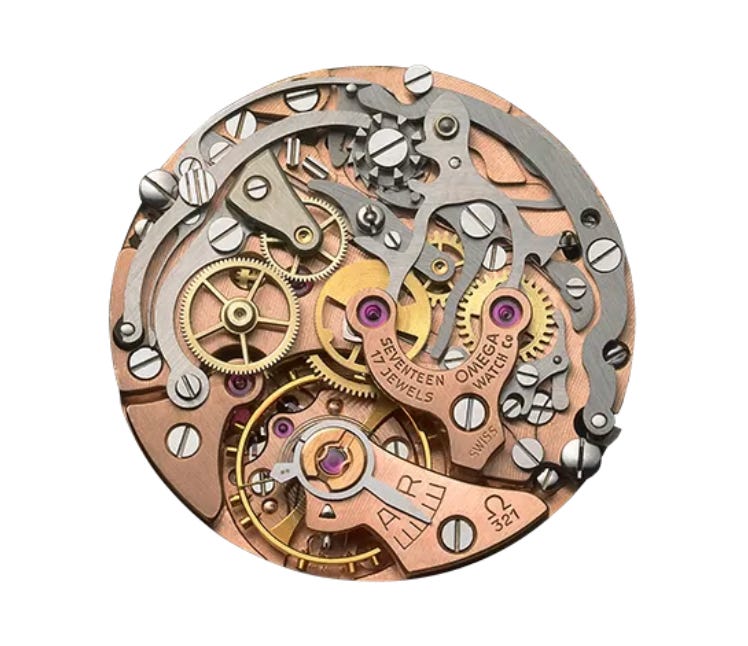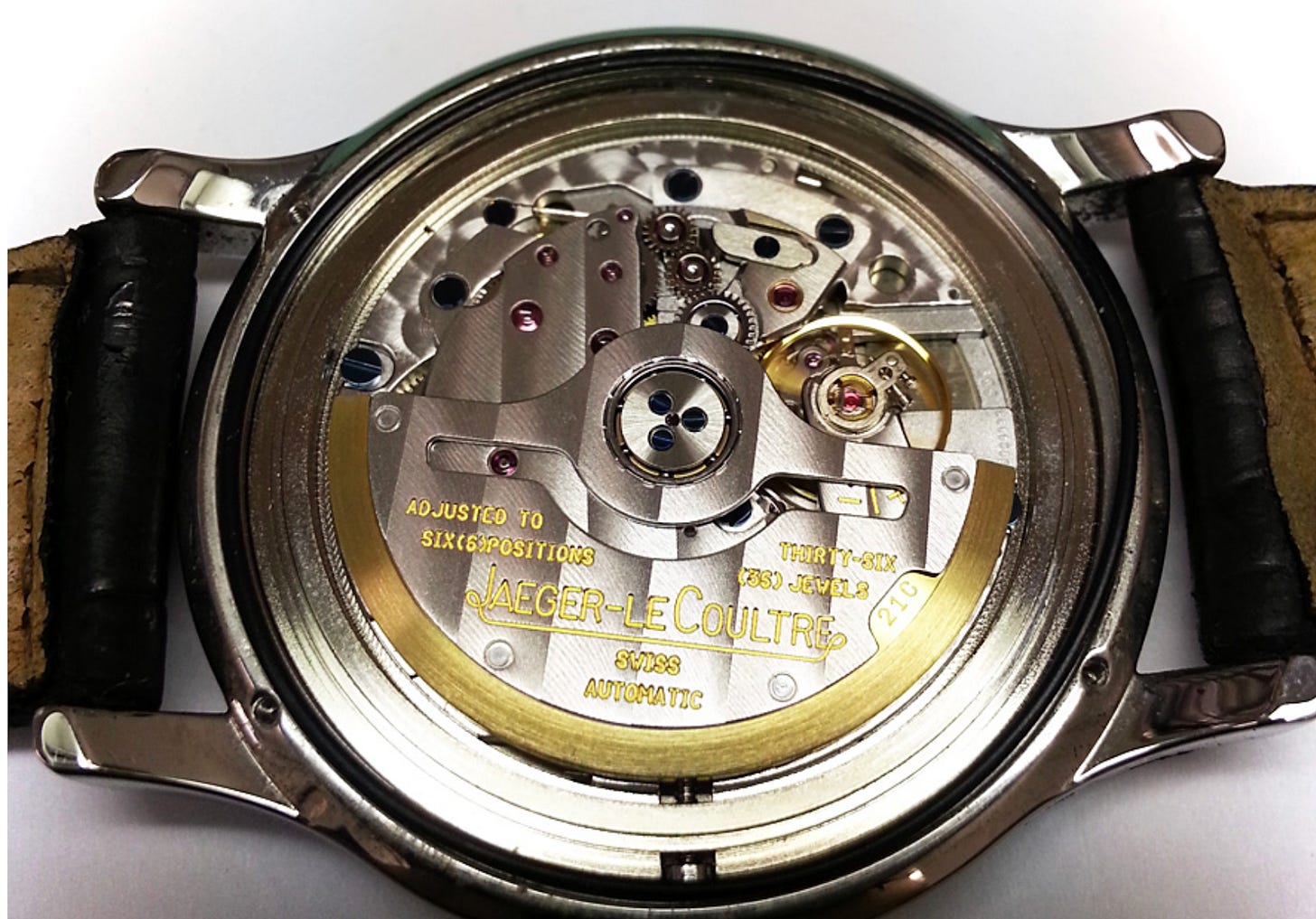Watch Movement Collecting Guide: 6 Legendary Calibers Every Collector Should Know
What happens when you follow the same movement through decades of design, brand ambition, and industrial change? A strategy for the mechanically inclined.
What is Caliber Collecting? The Ultimate Watch Collector's Strategy
Caliber collecting—focusing on the same watch movement across different brands and decades—represents the most sophisticated approach to horological collecting. Unlike traditional brand-focused collecting, caliber collectors follow legendary movements like the Omega 321, ETA 2824, and Zenith El Primero as they appear in different watches throughout history.
Collectors often think in references, in brands, in eras. They chase provenance, case shapes, dial colors, the elusive limited run. But beneath all that—beneath the dial, the bezel, and price—is something far more stable: the movement. A mechanical constant, ticking its rhythm through generations of shifting design and industrial intent.
To collect the same caliber across time is to reject surface variation in favor of deeper continuity. It's not about brand loyalty. It's not even about aesthetics. It's about following a mechanical idea as it is interpreted, reinterpreted, and sometimes quietly misused by different watchmakers across the decades.
This comprehensive guide explores six essential calibers that form the backbone of serious watch collections, from the moon-landing Omega 321 to the independent innovation of the GP 3100. Each offers a blueprint for understanding how watchmaking evolves, not through revolution, but through the quiet persistence of what stays the same.
Omega Caliber 321 / Lemania 2310: The Moon Landing Movement
The Lemania 2310 may be the most quietly influential chronograph movement in modern watchmaking. Introduced in the 1940s as a development of the CH 27 architecture, it formed the basis for Omega's legendary Caliber 321 and would go on to power refined chronographs by Vacheron Constantin, Breguet, and even Patek Philippe—each applying their own finishing, each rewriting the script. Vacheron used it in its Ref. 4178 and 4072 chronographs; Breguet employed it in the Type XX military chronographs; and Patek Philippe transformed it into the highly decorated CH 27-70 used in the iconic Ref. 5070.
It often begins with the Omega Speedmaster. For many collectors, the Caliber 321 inside the original Moonwatch is a gateway drug—a movement with both myth and provenance. But as you trace the Lemania 2310 backward and sideways, you begin to see its fingerprints across horology's most aristocratic pages: in the gold Vacheron chronographs of the 1950s, in the regal austerity of Breguet Type XXs, and in the early Geneva Seal-certified creations of Roger Dubuis. The same base caliber, interpreted through the lenses of space exploration, high society, and revivalist independence, reveals the subtle ambitions of each watchmaker who housed it.
Key Models to Collect:
Omega Speedmaster Pre-Professional (1957-1968)
Vacheron Constantin Ref. 4178 (1950s-60s)
Patek Philippe Ref. 5070 (2005-2019)
Breguet Type XX/XXI military chronographs
ETA 2824-2: The Swiss Workhorse That Built Modern Collecting
The ETA 2824 dates back to 1971 and was derived from the Eterna 1427. Notably, Eterna founded ETA SA in 1932, making this lineage both technical and genealogical. It became the backbone of Swiss watchmaking during the quartz crisis and well into the mechanical revival, especially in the 1990s. The 2824-2 version, introduced later, offered higher accuracy and shock protection, eventually becoming the default automatic caliber for hundreds of brands.
There's a different kind of beauty in the ETA 2824-2—less glamorous, more democratic. First encountered in a sturdy 1990s Tudor or a first serious watch bought on a student's budget, it's the horological equivalent of a Swiss army knife. When ETA's supply tightened, Sellita stepped in, and microbrands like Baltic and Christopher Ward kept the story alive. To build a micro-collection around this movement is to trace the parallel evolution of access and ambition—from mass-market reliability to neo-vintage idealism, all anchored by the same dependable engine.
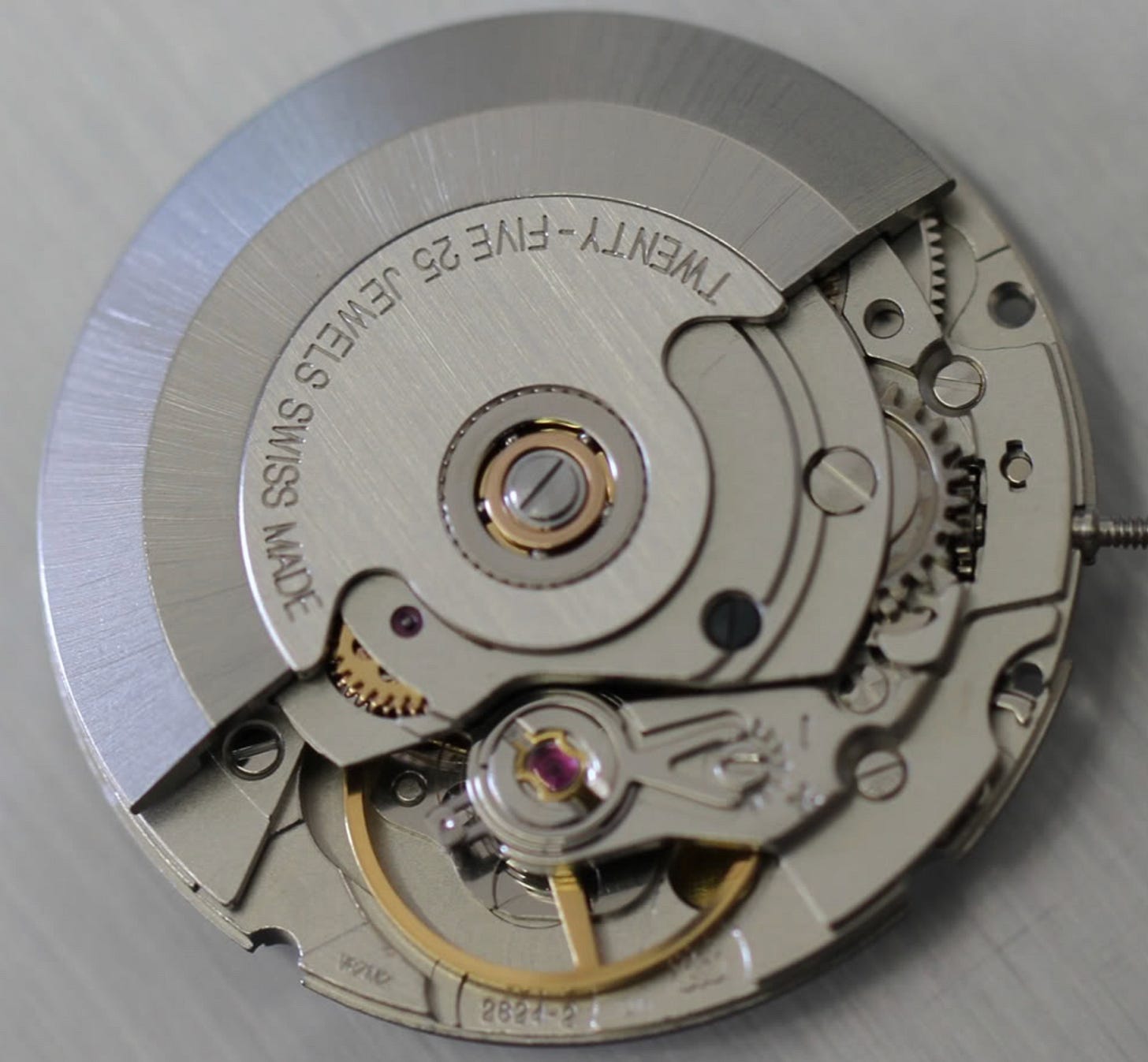
Essential ETA 2824-2 Watches:
Tudor Black Bay (various references)
Christopher Ward C65 Trident
Baltic Aquascaphe and HMS series
Tissot Seastar and PRC 200
Early Oris Aquis models
Zenith El Primero: The High-Beat Chronograph Revolution
Launched in 1969, the El Primero was the first fully integrated automatic chronograph beating at 36,000 vibrations/hour. When the movement faced extinction in the 1970s, Charles Vermot famously hid the tooling in Zenith's attic, preserving it for revival in the 1980s. Rolex used a modified version in the Daytona 16520 — proof of its enduring engineering. Zenith reintroduced the El Primero in 1986 after a hiatus, thanks to Vermot's foresight.
Open caseback. Start chronograph. Listen. The El Primero sings at 36,000 vibrations per hour—a song of defiance from 1969 that hasn't faded. First in Zenith's A386, then smuggled into Rolex Daytonas from 1988 to 2000, and now reborn in revival pieces like the Chronomaster Original. It's a caliber that insists on its own presence. For collectors, it offers a rare chance to hold different identities—Zenith's technical audacity, Rolex's quiet pragmatism, and modern openwork design—all with one mechanical soul.
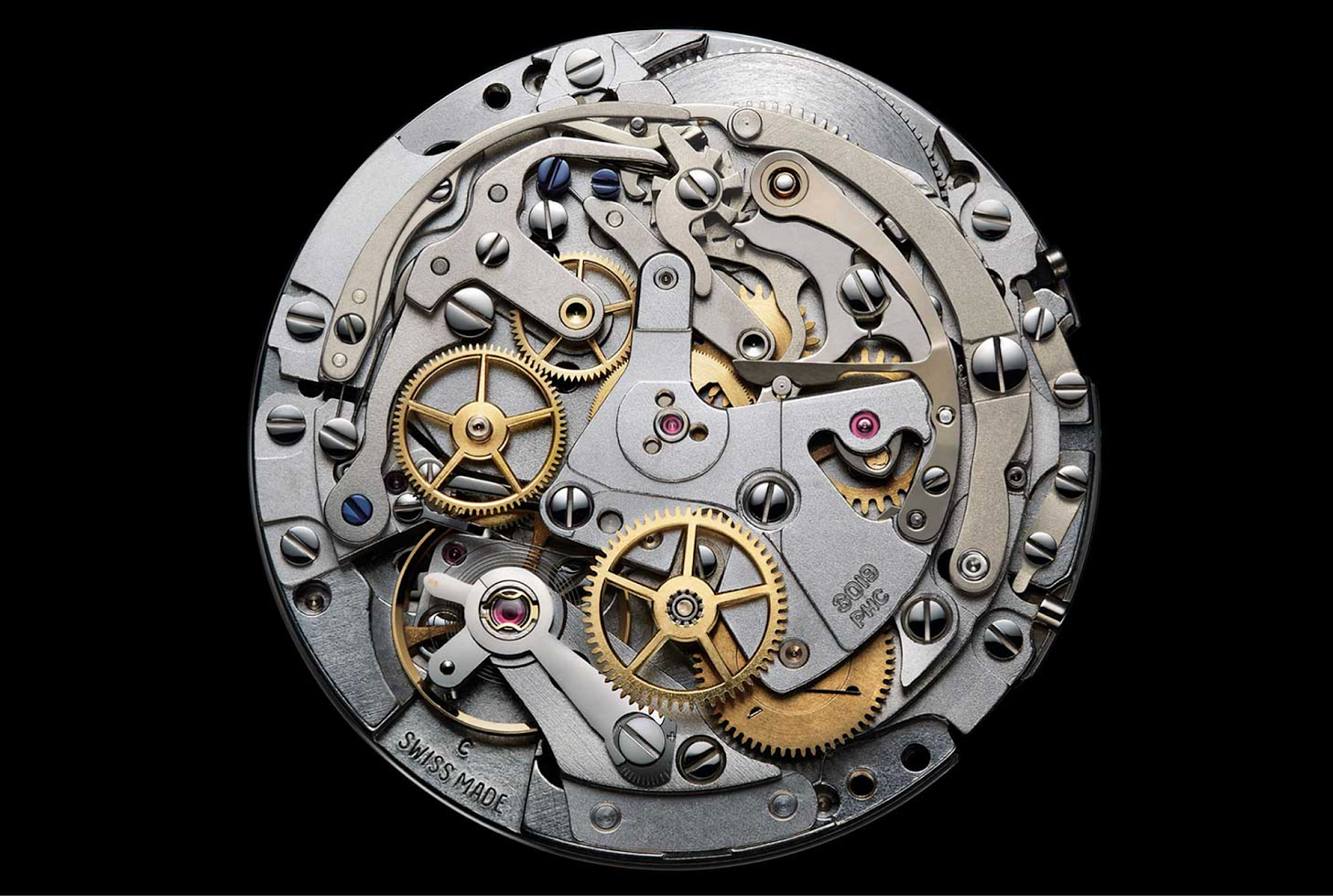
Must-Have El Primero Pieces:
Zenith A386 (original 1969 model)
Rolex Daytona 16520 (1988-2000)
Zenith Chronomaster Original
Jaeger-LeCoultre 889/2: The Manufacture Multi-Brand Engine
Introduced in the early 1990s, the JLC 889/2 represents something rare in haute horlogerie: a movement so refined that rival manufactures willingly embraced it as their own. At 26mm in diameter and 4.55mm thick, with 36 jewels and a 43-hour power reserve, it became the hidden backbone of luxury watchmaking's most aristocratic names—a technical democracy beneath branded facades.
To collect the 889/2 is to trace the secret genealogy of Swiss prestige. In a Jaeger-LeCoultre Master Control, it beats with quiet confidence, signed and dated by its assembling watchmaker. Rebadged as Caliber 1310, it powered Vacheron Constantin's elegant dress watches of the 1990s. At IWC, it became Caliber 3254, the foundation for perpetual calendars designed by Kurt Klaus himself. Even Audemars Piguet paired it with complications, trusting its precision for their most demanding mechanisms.
What makes the 889/2 compelling is its paradox: a movement celebrated precisely because it disappeared. While other calibers announced themselves through signature architecture or distinctive finishing, the 889/2 succeeded by becoming invisible—a neutral stage for each brand's aesthetic ambitions. Adjusted to six positions and rigorously tested for 1,000 hours, it represented Swiss manufacturing at its most confident: so reliable that competitors became collaborators.
This was the era before in-house movements became a marketing imperative, when technical excellence mattered more than origin stories. To pursue the 889/2 across different brands is to witness horology's last moment of honest cooperation—when the best movement simply won, regardless of whose name appeared on the dial.
Notable JLC 889/2 Applications:
Jaeger-LeCoultre Master Control series
Vacheron Constantin dress watches (as Caliber 1310)
IWC perpetual calendars (as Caliber 3254)
Audemars Piguet complications
Valjoux 7750: The Most Popular Chronograph Caliber Ever Made
Designed by Edmond Capt in 1973 for Valjoux (later absorbed into ETA), the 7750 used a cam-and-lever system instead of a traditional column wheel, enabling mass production and easy service. It nearly disappeared during the quartz crisis but returned in force in the 1980s, powering everything from military watches to luxury chronographs.
The Valjoux 7750 has long been the shape-shifter of modern horology. Designed in 1973 with cam switching for ease of service, it became the go-to chronograph base for Sinn, TAG Heuer, IWC, and even early Panerai.
The 7750 wasn't born for beauty. It was built to function, survive, and be serviced. Its strength lies in its straightforward architecture and legendary reliability. Yet it's precisely that neutrality—its capacity to disappear—that made it a favorite across decades. Some brands kept it raw; others dressed it in gold.
And then there's the collector's challenge: can you identify the 7750 by its feel? The asymmetric rotor wobble, the precise yet unromantic click of its pushers. It's not haute horlogerie, but it's real. And in its ubiquity lies its legacy.
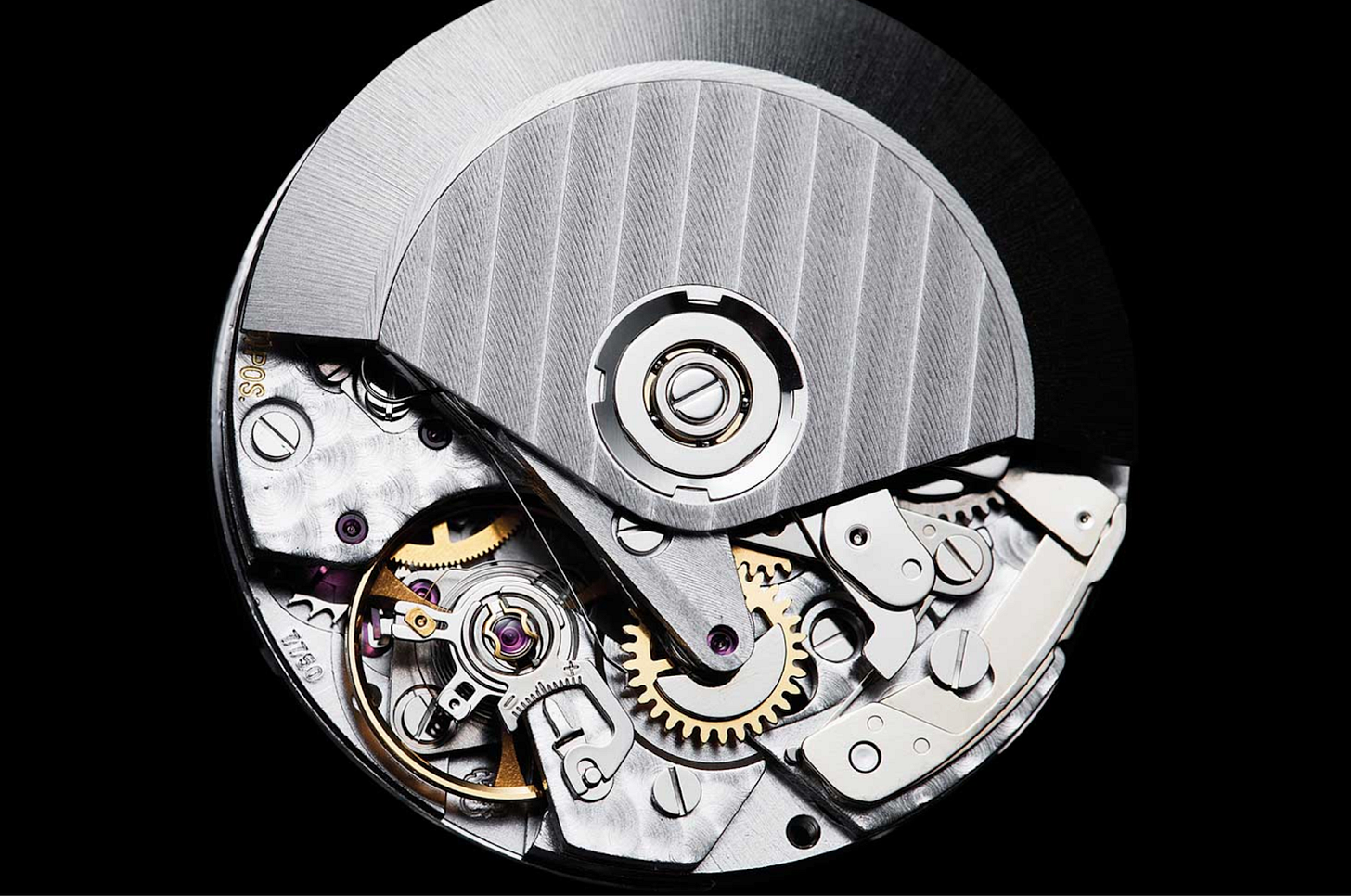
Notable Valjoux 7750 Applications:
IWC Portuguese Chronograph
Sinn 356 and 358 Flieger series
TAG Heuer Formula 1 and Carrera
Panerai Luminor Chrono (early models)
Breitling Navitimer and Chronomat
Girard-Perregaux 3100: The Independent Swiss Innovation
Introduced in 1994, the GP 3100 represented a bold declaration of independence from the Swiss ebauche system. At 25.6mm diameter and 3.36mm thick—dimensions comparable to the ETA 2892—it proved that a truly independent manufacture could compete with industry giants while maintaining its own distinctive voice.
The 3100 was Girard-Perregaux's answer to a fundamental question: could a historic manufacture create a movement so compelling that even rivals would embrace it? The answer came swiftly. Vacheron Constantin adopted it as their Caliber 1310, housing it in elegant dress watches throughout the 1990s. Ebel built their reputation around it. Bulgari trusted it for their luxury timepieces. Harry Winston used it as the foundation for their striking Bi-Retrograde complications.
What distinguished the 3100 was its quiet innovation. While other manufacturers chased headlines with exotic materials or complex complications, GP focused on fundamental engineering excellence. The movement featured ceramic ball bearings—developed in collaboration with specialized suppliers—that eliminated traditional lubrication issues and increased efficiency. It was a solution born from practical watchmaking rather than marketing ambition.
To collect the 3100 is to trace the last generation of inter-brand cooperation before the in-house movement arms race reshaped the industry. In a GP Laureato from 1995, it celebrates twenty years of iconic design with mechanical dignity. Beneath a Vacheron Constantin dial, it whispers Swiss refinement. In a Harry Winston complication, it proves that true engineering transcends boutique boundaries.
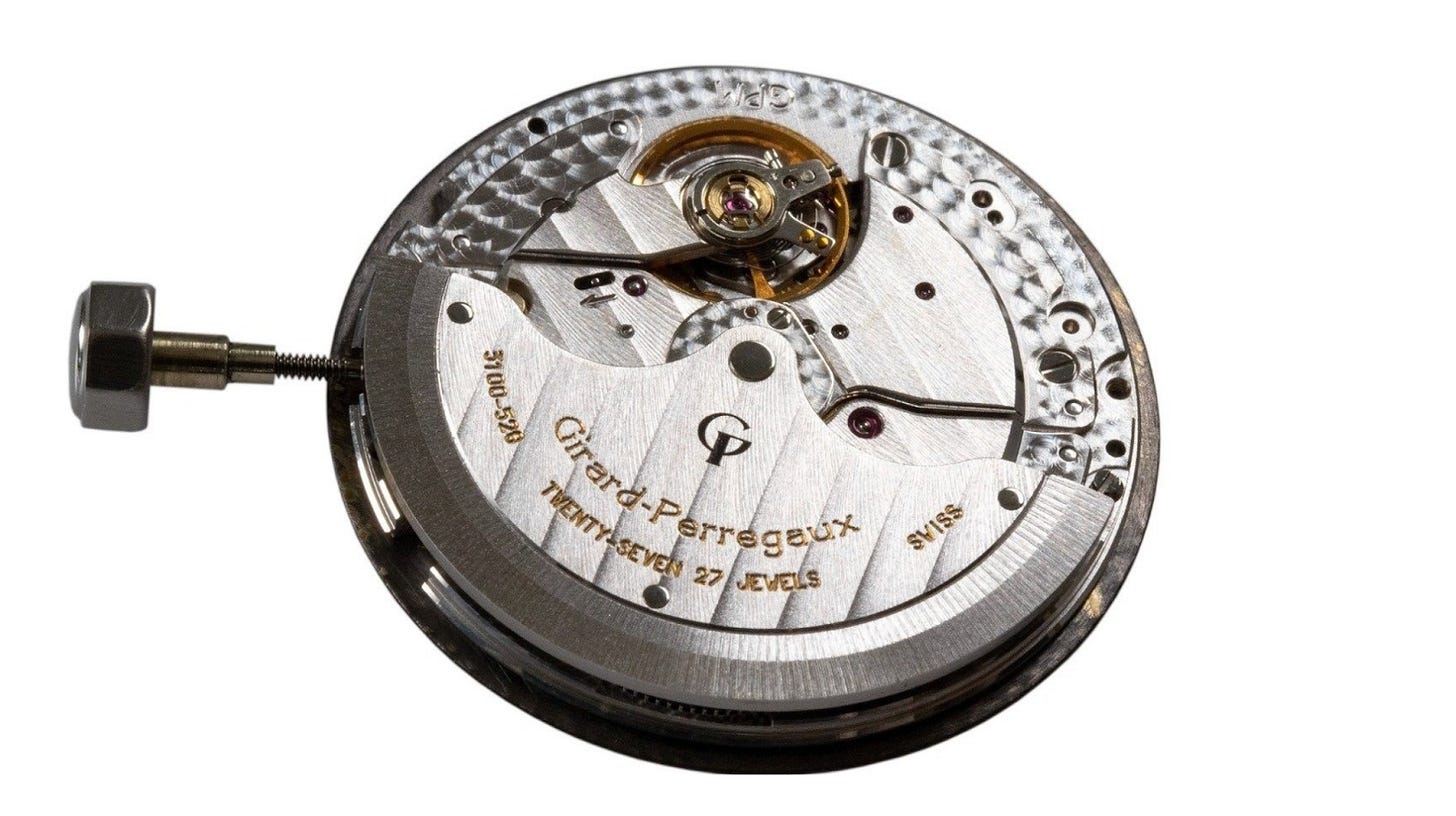
Essential GP 3100 Examples:
Girard-Perregaux Laureato (1995 relaunch)
Vacheron Constantin dress watches (as Cal. 1310)
Harry Winston Bi-Retrograde
Ebel luxury timepieces
Bulgari high-end collections
A Constant in the Equation
Brands rise, designs recycle, and styles fracture and recombine. But movements—true calibers—persist. To collect the same movement across different references, decades, and ambitions is to trace the structural memory of the mechanical watch itself.
A movement is not just a mechanism—it is an idea carried forward. The Lemania 2310, born in the mid-20th century, became the spine of Moon landings, Geneva salons, and revivalist ateliers. The ETA 2824-2 bridged the industrial and the aspirational, surviving the quartz crisis to underpin a generation of microbrands. The El Primero, with its rhythmic insistence, outlived its own extinction to power icons from Zenith and Rolex alike.
Others never courted the spotlight. The JLC 889/2 succeeded by becoming invisible—a neutral stage that allowed Vacheron Constantin, IWC, and Audemars Piguet to stage their own aesthetic dramas. The 7750 became invisible through its ubiquity—an engine of reliability hiding beneath countless dials. And the GP 3100, with its ceramic ball bearings and quiet innovation, represented the last generation of inter-brand cooperation before the in-house movement arms race reshaped the industry.
To collect by caliber is to collect intention—industrial, artisanal, technical, poetic. These six are not just movements; they are perspectives. And to follow them is to chart watchmaking as it was, as it changed, and as it insists on continuing.
Bibliography
Books and Reference Works
Brunner, Gisbert L., and Christian Pfeiffer-Belli. Wristwatches: Armbanduhren Montres-bracelets. Cologne: Könemann, 1999.
Dowling, James, and Jeffrey Hess. The Best of Time: Rolex Wristwatches – An Unauthorized History. Atglen, PA: Schiffer Publishing, 2006.
Stone, Gene, and Stephen Pulvirent. The Watch, Thoroughly Revised. New York: Artisan Books, 2018.
Technical and Movement Sources
ETA SA Manufacture Horlogère Suisse. “Technical Manuals and Movement Data Sheets.” Accessed May 2025.
https://www.eta.ch
Ranfft, Roland. “Mechanical Watch Movements Database.” Accessed May 2025.
http://www.ranfft.de
WatchBase. “Watch Movement Database.” Accessed May 2025.
https://www.watchbase.com
Editorial Features and Articles
Koh, Wei. “The Quiet Genius of F. Piguet 1185.” Revolution Watch, July 12, 2019.
https://revolutionwatch.com
Markl, Xavier. “A Technical Look at the Valjoux 7750.” Monochrome Watches, August 3, 2021.
https://monochrome-watches.com
Hodinkee. “Historical Perspectives: The Story of Charles Vermot, The Man Who Saved The El Primero.” June 23, 2021.
https://www.hodinkee.com
Collector and Community Sources
Omega Forums. “History of the Lemania 2310 (Cal 321 Omega).” April 24, 2017.
https://omegaforums.net
WatchUSeek. Various movement discussions, 2010–2023.
https://www.watchuseek.com
About the Author
Sergio Galanti is a journalist specializing in independent watchmaking and mechanical horology.



